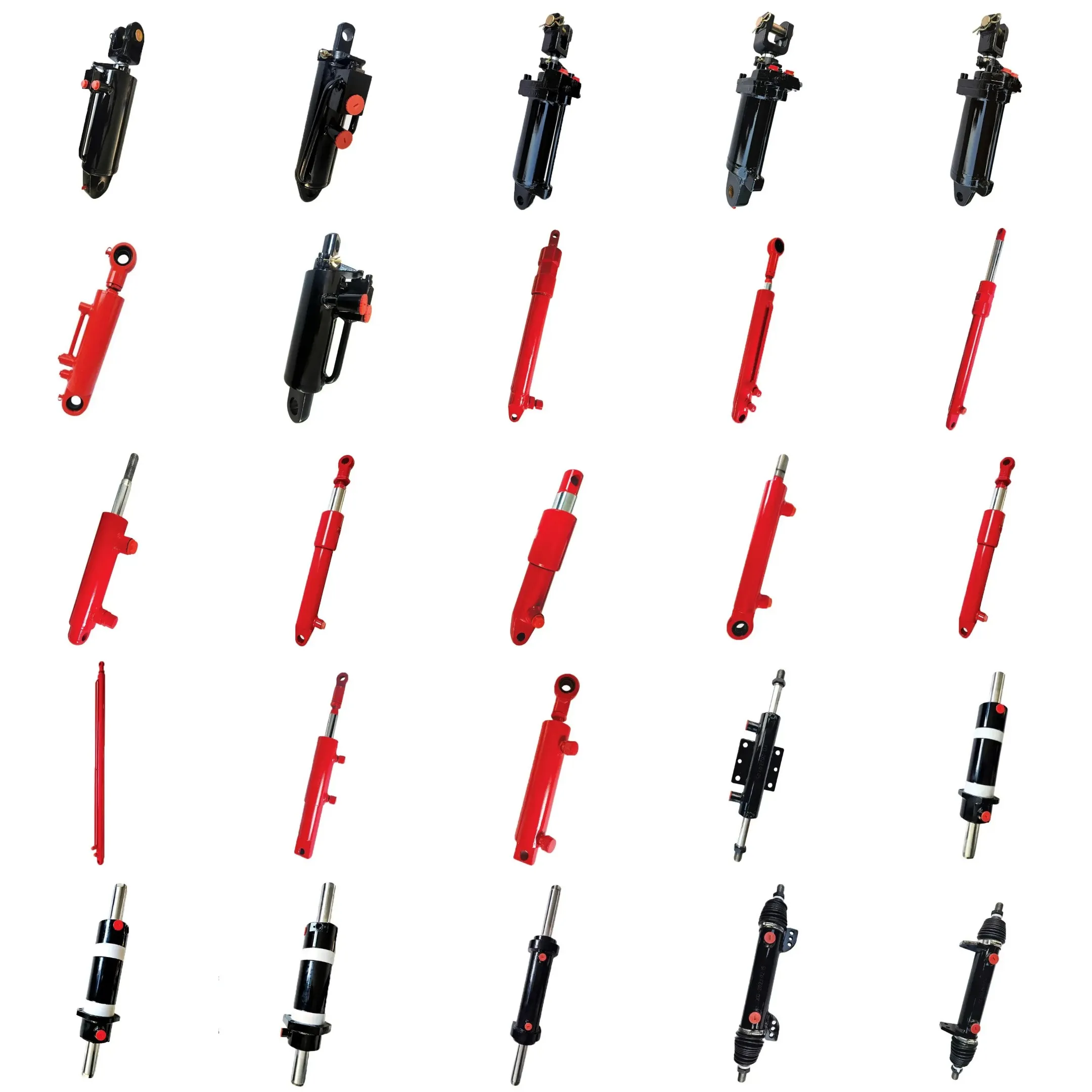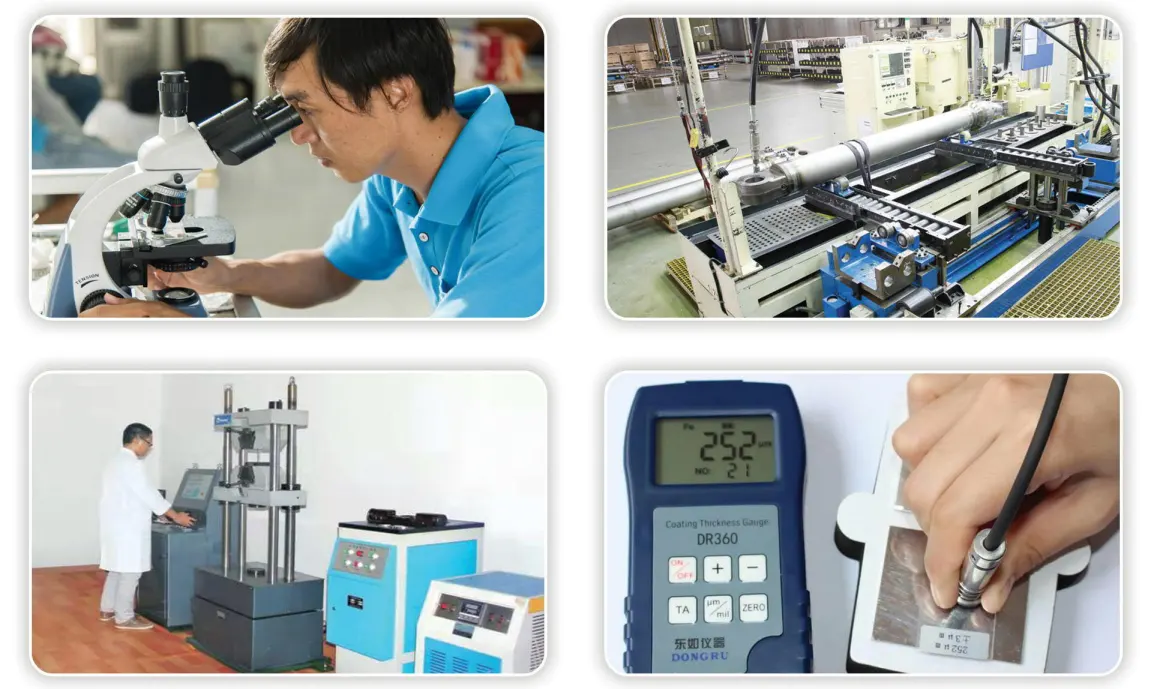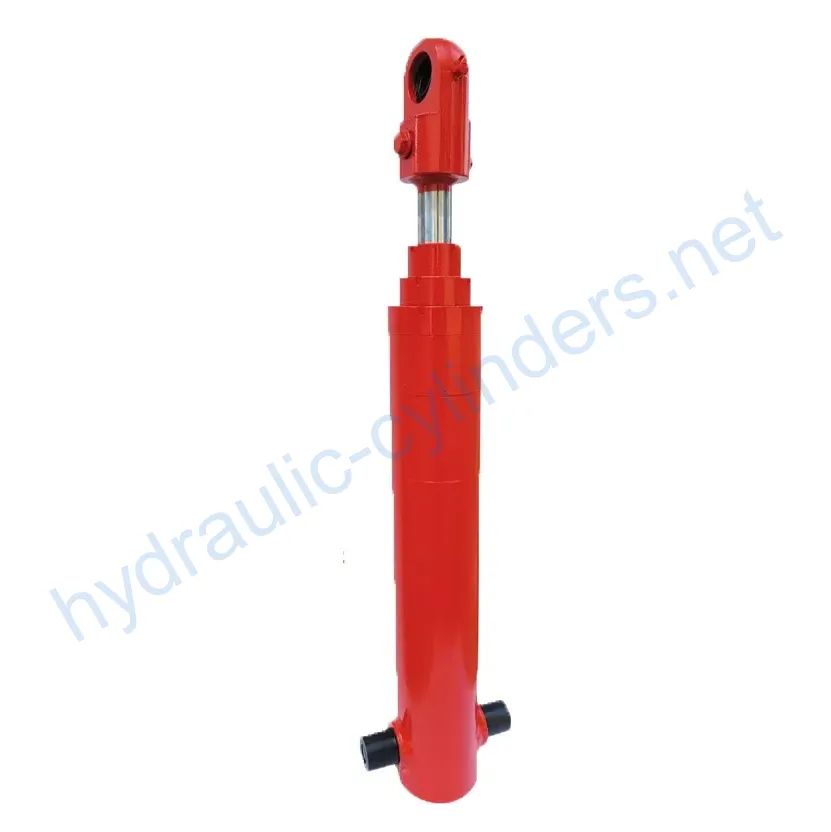Sanitation Vehicle Push Shovel Hydraulic Cylinder
Sanitation Vehicle Push Shovel Hydraulic Cylinder
Product Overview
The Sanitation Vehicle Push Shovel Hydraulic Cylinder is a crucial component designed to enhance the efficiency of sanitation vehicles. This hydraulic cylinder plays a vital role in the operation of push shovels, allowing for effective lifting and pushing of waste materials during collection processes. With precise engineering, it ensures smooth operation and reliable performance under various load conditions. The hydraulic cylinder's capability to generate significant force makes it indispensable for sanitation applications, where heavy lifting is often required. Utilizing hydraulic technology, it converts hydraulic pressure into mechanical energy, facilitating the movement of the push shovel with minimal effort from the operator.
Product Specifications
Cylinder Diameter
The cylinder diameter is 63mm, which provides a robust structure to withstand high pressures during operation.
杆直径
The rod diameter measures 40mm, ensuring strength and stability while allowing for smooth extension and retraction.
Travel
With a travel length of 465mm, this hydraulic cylinder can effectively accommodate various operational requirements.
Installation Distance
The installation distance of 735mm is designed for compatibility with a variety of sanitation vehicle models, ensuring ease of integration.
Key Features
- High-performance hydraulic operation for efficient waste management.
- Durable construction materials that ensure longevity.
- Customizable dimensions to fit specific sanitation vehicle designs.
- Easy installation and maintenance procedures.
- Proven reliability in challenging environmental conditions.
We specialize in manufacturing these hydraulic cylinders, ensuring that our products perfectly replace existing ones, enhancing performance and durability.
Applications
Waste Collection Vehicles
Sanitation vehicles equipped with push shovels utilize hydraulic cylinders for efficient waste collection. The cylinder's ability to lift and push heavy loads makes it essential in urban cleanup efforts, ensuring that waste is collected quickly and effectively. The hydraulic system allows the operator to manage the push shovel with precision, reducing physical strain and improving overall productivity.
Street Cleaning Machines
In street cleaning applications, these hydraulic cylinders assist in the operation of brushes and scrapers, effectively removing debris and waste from roadways. The hydraulic power enables the brushes to engage the pavement more thoroughly, enhancing the cleaning process and keeping urban environments tidy.
Construction and Demolition Equipment
These hydraulic cylinders can also be used in construction vehicles where lifting and pushing mechanisms are required. The robust design ensures that they can handle the stress of heavy workloads, making them suitable for various construction tasks.
Landscaping Equipment
In landscaping applications, hydraulic cylinders are used in equipment that requires precise movement, such as diggers or graders. The cylinders provide the necessary force to manipulate tools effectively, allowing for efficient landscaping and ground preparation.
Snow Removal Vehicles
During winter months, sanitation vehicles adapted for snow removal rely on hydraulic cylinders to operate shovels and plows. The ability to control the angle and position of the shovel is crucial for effective snow clearance, making these cylinders vital for winter maintenance operations.
Design Considerations and Selection Criteria
Load Capacity
When selecting a hydraulic cylinder, load capacity is a prime consideration. The Sanitation Vehicle Push Shovel Hydraulic Cylinder is engineered to handle significant weights, ensuring safe and effective operation. This capacity is vital in preventing structural failure during heavy-duty tasks, particularly in sanitation or construction applications.
Sealing Performance
Sealing is critical in hydraulic cylinders to prevent fluid leakage and maintain pressure. Our cylinders incorporate high-quality seals that ensure optimal performance and longevity. This not only enhances efficiency but also reduces maintenance costs associated with fluid loss.
Durability
Durability is a key factor, as hydraulic cylinders are often exposed to harsh environmental conditions. Our cylinders are manufactured from high-grade materials that resist wear and corrosion, ensuring they withstand the rigors of daily use in sanitation vehicles.
Safety Features
Safety is paramount in hydraulic systems. Our cylinders are designed with built-in safety features to minimize risks during operation. This includes pressure relief valves and reinforced structures that prevent failure under excessive load, enhancing operator safety.
Maintenance Considerations
Ease of maintenance is another crucial design aspect. Our hydraulic cylinders are designed for straightforward inspection and servicing, allowing operators to conduct regular checks without extensive downtime. This proactive maintenance approach extends the lifespan of the equipment and ensures reliable performance.
Sealing and Lubrication
Proper sealing and lubrication are essential for the optimal performance of hydraulic cylinders. Various sealing elements such as piston seals and rod seals are utilized to prevent fluid leakage. We use high-quality materials like polyurethane and nitrile rubber, which offer excellent abrasion resistance and longevity.
The surfaces of the cylinder body and threaded ends are meticulously processed to enhance wear resistance. Regular lubrication is crucial; operators must ensure that the hydraulic oil is topped up appropriately to facilitate smooth operation and minimize friction. This practice not only enhances performance but also protects internal components from premature wear.
Regular Inspection and Preventive Maintenance
- Conduct routine visual inspections to detect any signs of wear or damage.
- Ensure that all hydraulic connections are secure to prevent leaks.
- Monitor hydraulic fluid levels regularly and top up as necessary.
Implementing these preventive measures helps maintain the efficiency and functionality of the hydraulic cylinder, ensuring it operates optimally throughout its service life.
Installation Guidelines
Correct installation of the hydraulic cylinder is crucial for its performance and longevity. Follow these steps for a successful installation:
- Begin by ensuring that the installation area is clean and free from debris.
- Use appropriate mounting brackets to secure the hydraulic cylinder in place, ensuring alignment with the push shovel.
- Connect the hydraulic lines to the inlet and outlet ports, ensuring no leaks occur.
- Test the operation of the cylinder before full deployment, checking for smooth movement.
- Make necessary adjustments to ensure that the cylinder operates efficiently within its designed parameters.
Maintenance Tasks
定期检查
Conducting regular inspections is vital to identify potential issues before they escalate. Check for signs of wear on seals and connections, and ensure that fluid levels are adequate. Early detection of problems can prevent costly repairs and downtime.
Proper Lubrication
Maintaining proper lubrication is essential for reducing friction within the hydraulic system. Ensure that hydraulic oil is regularly checked and changed according to manufacturer specifications. This practice promotes smoother operation and extends the lifespan of the cylinder.
Seal Replacement and Calibration Checks
Regularly replacing seals and conducting calibration checks ensures that the hydraulic cylinder maintains optimal performance. Over time, seals may wear out, leading to leaks and reduced efficiency. Timely replacement mitigates these issues and maintains hydraulic pressure.
Safety Considerations and Environmental Factors
When utilizing hydraulic cylinders, safety measures are paramount. It is essential to ensure that the system is properly pressurized and that operators are trained in safe handling practices. Implementing safety protocols can significantly reduce the risk of accidents during operation.
Furthermore, environmental considerations should be addressed, ensuring that hydraulic fluids are disposed of responsibly and that the equipment operates within environmentally safe parameters to minimize ecological impact.
Fault Diagnosis and Common Issues
- Poor performance or slow operation may indicate low fluid levels or contamination in the hydraulic oil.
- Leaking hydraulic fluid can be a result of worn seals or loose fittings.
- Inconsistent movement could suggest alignment issues or internal damage within the cylinder.
By recognizing these symptoms early, operators can take corrective action to address the issues, thereby preventing further damage and ensuring the efficient operation of the sanitation vehicle.
Troubleshooting Tips and Solutions
To effectively diagnose and resolve issues with the hydraulic cylinder, consider the following:
- Regularly check fluid levels and replace contaminated oil to ensure optimal performance.
- Inspect seals and fittings for wear and tear; replace as necessary to prevent leaks.
- Maintain proper alignment during installation to avoid undue stress on the cylinder.
Implementing these preventive measures will minimize potential problems, ensuring the hydraulic cylinder operates efficiently over its service life.

Company Overview
We are a leading manufacturer of hydraulic cylinders, offering a diverse range of products that cater to various industry needs. Our strong position in both domestic and international markets sets us apart as a reliable manufacturer and wholesale distributor. We pride ourselves on our expertise, having acquired international certifications that reflect our commitment to quality.
Our production capabilities are supported by advanced equipment, enabling us to deliver customized services tailored to meet specific needs. Additionally, our after-sales service ensures that clients receive ongoing support, enhancing user experience and satisfaction.

Author: lyl
参观我们的 VR 工厂
通过以下方式参观我们的 VR 工厂
液压缸应用:


